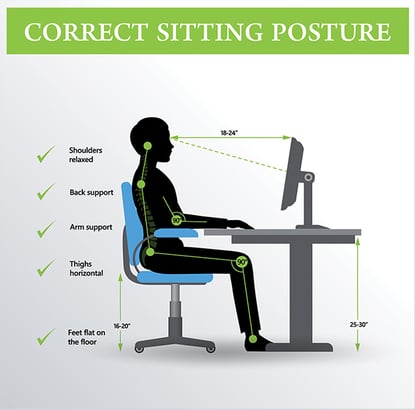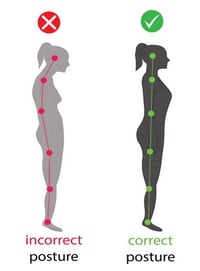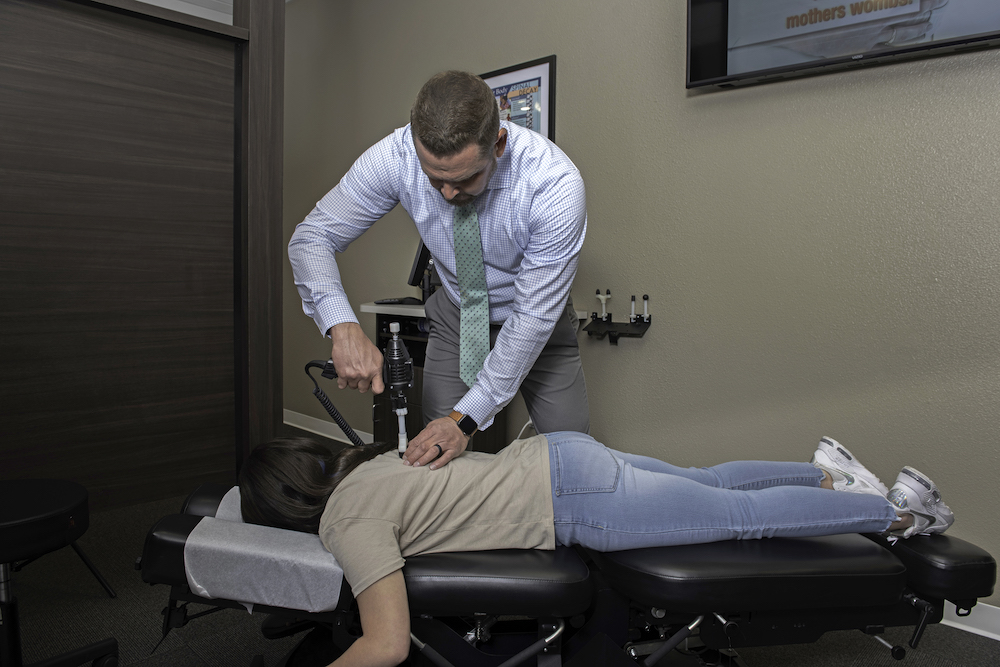How Do I Prevent a Bulging Disc or Herniated Disc?
4 min read

According to the American Chiropractic Association (ACA), up to 80% of people are likely to experience back pain at some point in their lives. For many people, the pain they feel in their lower back – and oftentimes in their legs – is a result of a bulging or herniated disc. While there is no absolute way to prevent disc-related problems such as this, there are steps you can take to help reduce your risk.
Stay Active to Reduce Back Pain in the Future
Exercise to help strengthen your back muscles, promote mobility, and increase flexibility, which can take some of the pressure off the space between your discs. This is the area that can bulge or rupture, causing back pain that changes how you live your day to day life.
The American Heart Association recommends 30 minutes of moderate-intensity exercise or 15 minutes of vigorous exercise at least five days a week. Light strength training (also called weight training or resistance training) should account for two of those days. Strength training isn't intended to necessarily increase your back muscle strength. Rather you should focus on overall muscle strength, including a strong core. Strengthening your muscles leads to better support for your spine and less back pain when you perform daily activities such as lifting and bending.
Exercises to Help Prevent a Bulging or Herniated Disc May Include:
-
Low-impact aerobic activities such as walking, swimming, or biking.
-
Resistance training in the form of weight machines, free weights, or resistance bands. Stretching and core-stabilizing activities, such as yoga, pilates, or McKenzie Method exercises.
-
When done with proper form, lunges, squats, and planks can also be beneficial.
While exercise is good, it’s important to understand that the wrong kinds of exercises can actually put you at risk for back injuries.
- High impact aerobic activities performed too much such as running or other sports that include repetitive motions.
-
Exercises like sit-ups or crunches, which only focus on the abdominal muscles, can actually cause back pain. Sit-ups and crunches encourage unnatural movement and strain on neck and back muscles.
-
Avoid exercises that involve extreme or abrupt moves such as deadlifts, which can put extra strain on your back and cause disc issues.
It’s always a good idea to consult with your doctor before beginning an exercise program, especially if you have been experiencing back pain.
Maintain a Healthy Weight to Fend off Back Pain
Being overweight puts extra strain on your spine that could cause the discs to break down at an earlier age. But losing weight isn't just good for your spine, it's good for your overall health and well-being. In addition to exercising, focus on eating a healthy diet with plenty of nutrient-rich anti-inflammatory foods to support a healthy spine.
Some of the best anti-inflammatory foods you can add to your diet include:
-
High-fiber fruits and vegetables, such as carrots, tomatoes, broccoli, apples, and strawberries
-
Potassium-rich foods, such as green leafy vegetables, avocados, bananas, coconut water, and cultured dairy
-
Foods rich in Omega-3 fats like fish and flaxseed
-
Clean, lean proteins, such as chicken, turkey, grass-fed beef, and cage-free eggs
In addition to eating healthy foods, it’s important to stay hydrated. There are many health benefits that come from drinking plenty of water, including a healthy spine and back. Spinal discs consist largely of water, therefore, keeping the body well hydrated will help maintain their good health. Consuming enough water can also help with weight management, which can lead to improved back health. The general rule of thumb is that you should drink eight 8-ounce glasses of water per day, however, some people may require more. This is why it is a good idea to sip water throughout the day, rather than only when thirsty.
Improve Your Posture
Slouching when reading, driving, working, or checking your phone puts excessive pressure on the spine, which can increase your chances of developing a bulging or herniated disc. By practicing the following techniques, you can improve your posture.
When sitting:
-
Keep your feet on the floor, with knees bent at a 90° angle
-
Relax your shoulders
-
Keep your elbows close to your body
-
Distribute the weight evenly across your hips
-
Make sure your back is fully supported
-
Take breaks every 20-30 minutes
When standing:
-
Stand up straight and tall with feet shoulder width apart

-
Keep your shoulders back
-
Pull your stomach in
-
Let your arms hang down naturally at your sides
-
Keep your head level
-
Distribute most of your weight on the balls of your feet
Use Proper Lifting Techniques
Using proper lifting techniques can help prevent avoidable back injuries. When lifting, use your powerful legs and buttocks muscles, rather than your weaker back muscles. Never bend at the waist. Keep your feet shoulder width apart and your head and back in an upright position.
Quit Smoking! It Increases back pain!
It’s no secret that smoking can have harmful effects on your health. What you may not know, however, is that the toxins in cigarettes can also affect your spine. Nicotine can prevent spinal discs from absorbing the nutrients that are necessary to maintain their structure. If you smoke, do yourself, and your spine, a favor and quit.
Get Regular Spinal Adjustments
Spinal adjustments do more than offer relief for back pain – they are beneficial for your general health and overall well-being. Chiropractic adjustments work by helping to place your body in the proper position that then allows the body to heal itself. Spinal adjustments can:
-
Help relieve pressure and pain caused by inflammation and swelling
-
Restore alignment of the spine that may be caused by poor posture
-
Improve flexibility by restore motion in your joints
Simply put, chiropractic care can have an impact on your overall ability to move efficiently and with full strength. If you have back pain that doesn't seem to go away or comes back frequently, request an appointment.





